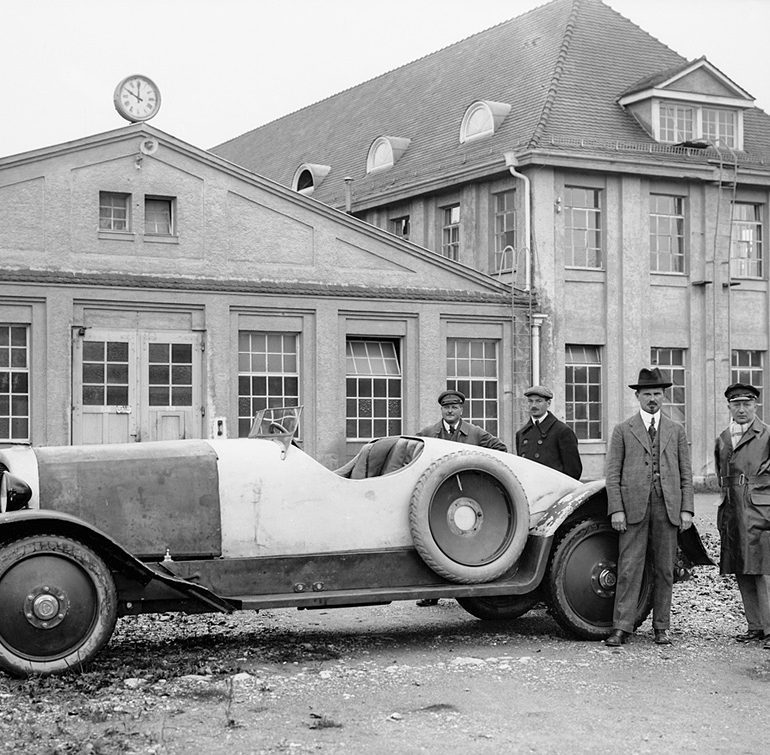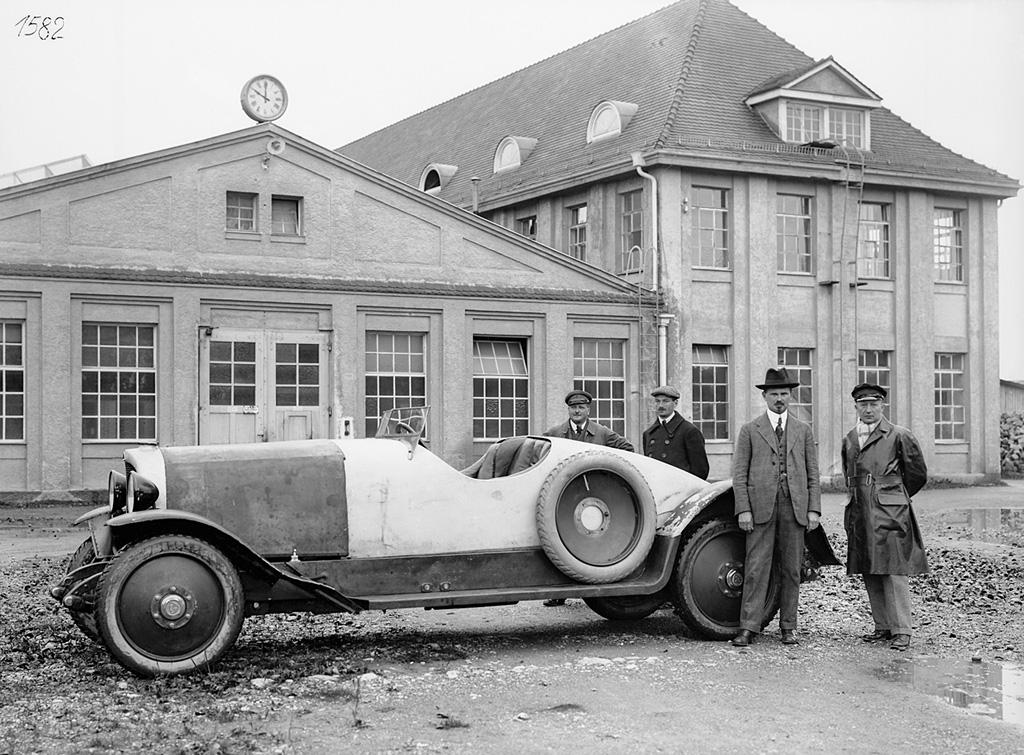1921 Maybach 22/70 HP W3
Karl Maybach now decided to go into car production on his own to utilise the large production capacities that were lying idle as a result of the cancellation of the Dutch order. The new car brand was ready to unveil its first production car at the Berlin Motor Show in September 1921– the Maybach W 3. The five-metre-long vehicle that attained speeds of up to 110 km/h was powered by the 70 hp (52 kW) in-line six-cylinder W 2 engine. The innovative features of the W 3 included a four-wheel brake system with mechanical braking power compensation and a two-speed transmission without gearshift. Gears were changed by depressing a foot-operated starting lever.
Designed for simple operation and thus high driving reliability and safety, this car targeted the customer group of “gentlemen drivers”, as the manufacturer himself described them in his operator’s manual. This term refers to those men (and women) who drove their car themselves rather than by a chauffeur. Maybach offered them a technically convincing concept centring around the engine: “The exceptional flexibility of the engine in conjunction with effective four-wheel brakes permits high average cruising speeds without having to drive at excessively high speeds,” explains the operator’s manual.
Like many other car manufacturers of the period, Maybach viewed engineering alone as the company’s core competence. And so the manufacturer from Friedrichshafen left the fitting of a body to the chassis to independent specialists like Auer (Cannstatt), Josef Neuss (Berlin), Franz Papler & Sohn (Cologne) and – in many cases – Spohn (Ravensburg). In all, from 1921 to 1928 the company built around 300 units of the Maybach 22/70 hp, as the W 3 officially was called, based on taxable horsepower and actual output. Buyers appreciated the cruising qualities of the car, but some also used it successfully in motor sports.
In Detail
| submitted by | Richard Owen |
| type | Series Production Car |





